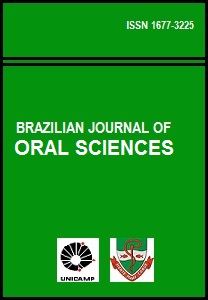Abstract
HIV-1 protease gene sequences were obtained from peripheral blood, saliva or oral tissues of 35 HIV+ patients using nested amplification and manual sequencing of PCR products. Of the 35 HIV+ patients 9 had clinical oropharyngeal candidiasis (OPC) while 26 did not, and only 4 patients were on protease inhibitor (PI) therapy. These patients were collected prior to major use of HAART therapy in New Orleans, Louisiana. Analysis of 172 amino acid sequences revealed unique patterns of mutation that were in most cases independent of the type of cell from which DNA was isolated and were, instead, primarily dependent on the individual patient. Principal component analysis indicated that approximately 50% of the variance of the amino acid replacements could be explained by patterns of change seen in only five patients. Significantly, 4 of these 5 patients were OPC+ indicating that patients with OPC are more likely to express a principal mutation pattern than patients without OPC (p = 0.002, Chi square). Dendrograms revealed that these five patients clustered separately from each other and from HIV-1LAI suggesting that principal mutation patterns as well as OPC are independent of viral evolution. In conclusion, prior to widespread use of PI therapy to combat HIV-1, patients with OPC exhibited unique patterns of amino acid replacements within the HIV-1 protease.References
Collins KR, Quiñones-Mateu ME, Wu M, Liuzze H, Johnson JL, Hirsch C et al. Human Immunodeficiency Virus Type 1 (HIV-1) Quasispecies at the sites of Mycobacterium tuberculosis infection contribute to systemic HIV-1 heterogeneity. J Virol 2002; 76: 1697-706.
Ogden RC, Flexner CW, editors. Protease inhibitors in AIDS therapy. New York: Marcel Dekker; 2001.
Wahl SM, Worley P, Jin WW. Secretory leukocyte protease inhibitor (SLPI) in mucosal fluids inhibits HIV-1. Oral Dis 1997; 3(suppl): 564-9.
Chun TW, Stuyver L, Mizell SB, Ehler JA, Micon M, Baseler AL et al. Presence of an inducible HIV-1 latent reservoir during highly active antiretroviral therapy. Proc Natl Acad Sci USA 1997; 94:13193-7.
Korin YD, Brooks DG, Brown S, Korotzer A, Zack JA. Effects of prostatin on T-cell activation and human immunodeficiency virus latency. J Virol 2002; 76: 8118-23.
Piscitelli SC, Burstein AH, Chaitt D. Indinavir concentrations and St. John’s wort. Lancet 2000; 355: 548-9.
Greenspan JC, Barr CE, Sciubba JJ, Winkler JR. Oral manifestations of HIV infection: definitions, diagnostic criteria and principles of therapy. Oral Surg Oral Med Oral Pathol 1992; 73: 142-4.
Hickman PJ, Leigh JE, Mera RM, Jr Fidel PF, Luftig RB. Oropharyngeal candidiasis in HIV+ patients may influence the selection of HIV-1 protease variants. Virus Res 2002; 87: 97- 106.
Hair JF, Jr, Anderson RE, Tatham RL. Multivariate data analysis, 5th ed. Upper Saddle River, NJ: Prentice Hall; 1998.
Gallaher WR, Ball JM, Garry RF, Martin-Amedee AM, Montelaro RC. A general model for the surface glycoproteins of HIV and other retroviruses. AIDS Res Hum Retroviruses 1995; 11: 191- 202.
Pearson WR, Lipman DJ. Improved tools for biological sequence comparison. Proc Natl Acad Sci USA 1988; 85: 2444-8.
Henikoff S, Henikoff JG. Amino acid substitution matrices from protein blocks. Proc Natl Acad Sci USA 1992; 89: 10915-9.
Rozas J, Rozas R. DnaSP version 3: an integrated program for molecular population genetics and molecular evolution analysis. Bioinformatics 1999; 15: 174-5.
Mock, A. Population dynamics of the HIV-1 protease gene in a Louisiana patient cohort. Louisiana State University: MS thesis; 1999.
Smith TF, Srinivasan A, Schochetman G,. The phylogenetic history of immunodeficiency viruses. Nature 1988; 333: 573-5.
Bradac J, Rock K, Thakallapally R, Gaschen B, Pillai S, Rese P et al. Nucleotide alignments of HIV-1/SIVcpz complete genomes. In: Kuiken C, Foley B, Hahn KB, McCutchan F, Marx P, Mellors J et al. editors. Human retroviruses and AIDS. Los Alamos, New Mexico: Theoretical Biology and Biophysics, Group T-10, Mail Stop K710, Los Alamos National Laboratory; 1999. p.75-81.
Naglik JR, Newport G, White TC, Fernandes-Naglik LL, Greenspan JS, Greenspan D et al. In vivo analysis of secreted aspartyl proteinase expression in human oral candidiasis. Infect Immun 1999; 67: 2482-90.
Gruber A, Speth C, Lukasser-Vogl E, Zangerle R, Borg-von Zepelin M, Dierich MP et al. Human immunodeficiency virus type 1 protease inhibitor attenuates Candida albicans virulence properties in vitro. Immunopharmacology 1999; 41: 227-34.
Luftig RB, Ikuta K. Are defective HIV protease deficient particles the real culprit in AIDS? ASM News 1994; 60: 417-9.
de Bernardis F, Chiani P, Ciccozzi M. Elevated aspartic proteinase secretion and experimental pathogenicity of Candida albicans isolates from oral cavities of subjects infected with human imunnodeficiency virus. Infect Immun 1996; 64: 466-71.
The Brazilian Journal of Oral Sciences uses the Creative Commons license (CC), thus preserving the integrity of the articles in an open access environment.

